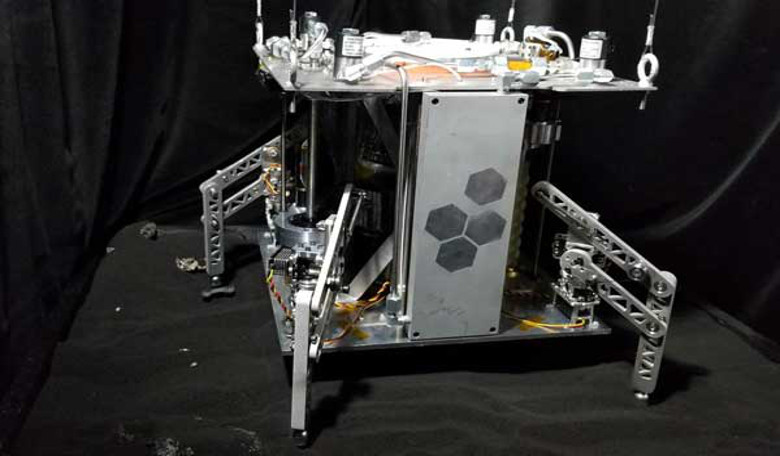Steam powered machines, nowadays, generally bring to mind antiquated transport vehicles that serve to remind passengers of days long gone. Certainly you would not expect to see new devices relying on the power of steam to propel them from location to location, say like out in space, from asteroid to asteroid for example.
But that is exactly what scientists from the University of Central Florida have been working on in collaboration with a private space company – Honeybee Robotics based in California – and it works remarkably well.
Called WINE, which stands for the World Is Not Enough, the microwave-sized spacecraft prototype extracts water from asteroids or other planetary bodies to generate steam and propel itself to its next target of interest; it is a system, its makers say, that could theoretically run 'forever.'
WINE has already been tested successfully at Honeybee’s facility where it mined the soil, made rocket propellant, and launched itself on a jet of steam extracted from the simulant, said its chief creator UCF planetary research scientist Phil Metzger.
“It’s awesome. We could potentially use this technology to hop on the Moon, Ceres, Europa, Titan, Pluto, the poles of Mercury, asteroids — anywhere there is water and sufficiently low gravity,” explained Metzger.
Metzger, who worked at NASA’s Kennedy Space Center before joining UCF, spent three years developing the adaptable technology needed to turn the idea into reality. WINE, says Metzger operates under a variety of scenarios depending on the gravity of each object to make it work. It can for instance deploy solar panels to get enough energy for mining and make steam, or for trips further afield, it could use light-weight, small radioisotopic decay units to power it on to Pluto and other locations far from the sun.
Radioisotope Heater Units are used frequently by NASA and were critical components aboard probes such as Galileo, the Huygens probes and the two solar powered Mars Exploration Rovers, for keeping the crafts warm while they carried out their mission objectives.
With a Solar System doomed to be littered by defunct robots no longer able to continue operations as they have run out of fuel, the steam-powered space-hopper could be a boon for future exploration, where the vast majority of its targets are laden with water or ice.
“Each time we lose our tremendous investment in time and money that we spent building and sending the spacecraft to its target,” Metzger says. “WINE was designed to never run out of propellant so exploration will be less expensive. It also allows us to explore in a shorter amount of time, since we don’t have to wait for years as a new spacecraft travels from Earth each time.”
Honeybee are no stranger to in-situ resource utilisation systems, and have in the past received a number of NASA Small Business Innovation Research (SBIR) awards to advance the technology.
Speaking about the project and the collaboration with NASA and academia, Kris Zacny, vice president of Honeybee Robotics said it “had been a tremendous success.” With early promising results, the team is now seeking partners to continue developing small innovative spacecraft that could change how we explore the Universe around us.











